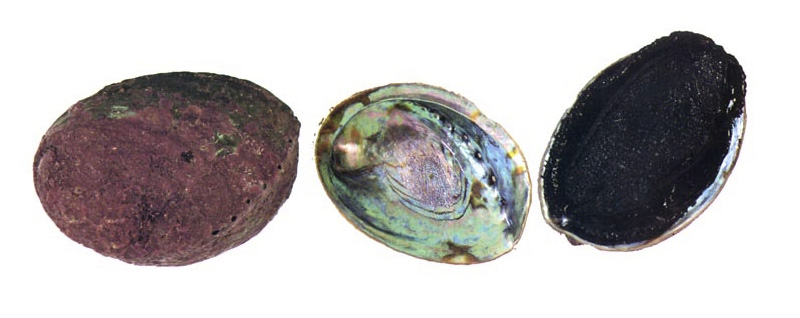
| Scale (tonnes) | 300 |
| Investment ($ millions) | $16.6 |
| 10 YR NPV - 14% discount rate ($ millions) | $(8.4) |
Paua belong to the Molluscan genus Haliotis that is more commonly known as abalone. Three species of abalone occur in New Zealand; black foot paua (Haliotis iris), yellowfoot paua (Haliotis australis) and white foot paua (Haliotis virginea). Only black foot paua are currently farmed.
Black foot paua is the largest abalone species found in New Zealand. It is most commonly found in shallow waters at depths less than 6 m on exposed coasts all around mainland New Zealand and the Chatham Islands.
In Asia, abalone is considered to be a highly prized seafood delicacy and achieve a high price at market. Because of their high market value the prospect of abalone aquaculture is attractive, and farmed abalone production now outweighs wild capture. The Food and Agriculture Organisation (FAO) statistics show that worldwide farmed abalone production has reached 22,000 tonnes. China and Taiwan produce the bulk of this production accounting for around 19,500 tonnes. South Africa, Australia, USA and Chile account for most of the remaining production. In New Zealand, paua are farmed not only for their meat but also for pearls grown within their shell.
Internationally abalone prices tend to be dependent on species, size and form of product, with larger wild harvested abalone achieving significantly better prices than the smaller farmed species. Markets exist for, fresh, dried, frozen and canned abalone products. The average import price for live abalone into Hong Kong in 2011 was around NZ$60/kg, but farmed product from Australia achieved an average of NZ$31/kg. Likewise, frozen wild product achieved around NZ$60/kg while dried abalone achieved up to NZ$380/kg. (Hoshino 2013)

Canned abalone (photo P heath)

Land based paua culture (Aquaculture Principles)
The New Zealand paua industry has been in existence since the mid 1980’s when NIWA (then MAF) developed hatchery techniques for the species. Paua farms in New Zealand have traditionally been land-based and configured to operate on flow through water supply where the water is pumped from the sea, over the paua and then returned to the sea.
Paua production in New Zealand is currently based around 12 farms, mostly on-shore systems that on-grow hatchery reared juveniles to market size for their meat. The largest of these is OceaNZ Blue Paua Ltd (OBP) is located at NIWA’s Bream Bay Aquaculture Park facility in Northland. OBP is on track to become the first 100 tonnes production facility in New Zealand. OBP operates using partial recirculation technology.
Paua are relatively slow growing and can take around 4 years to reach a commercial size of 80 – 90 mm shell length (~ 90g live weight). In contrast to many overseas farms, New Zealand paua farms tend to rely on manufactured pellet feeds. This is due to the difficulties in obtaining sufficient quantities of seaweed from the wild in New Zealand. Pelleted diets offer the additional benefit of reducing the amount of black pigment in the foot, making the animals more acceptable to overseas markets that are used to pale footed species. A well run farm may expect to achieve an FCR of around 1.5 using pelleted diets.
The use of RAS for paua production is gaining favour in New Zealand and overseas, where the ability of RAS to improve stock performance through controlling temperatures and reducing disease risks is seen as a significant benefit for this highly valued species.
The following generic model simulates the production of paua in an intensive RAS system. The assumptions entered in the model are based on the best information available to NPFL at the time. They will give a general picture of the likely economics and financial viability with this species.
The key outputs from the 10 year generic paua model are:
Based on your specific location, RAS system design and performance specified by the supplier the assumptions may need to be altered for your particular situation. Additionally you may wish to manage production differently i.e. grow the fish to a larger size before sale.
NPFL strongly advise that you seek advice from experts in setting up your own assumptions for your model runs.
Ph 09 375 2035
[email protected]